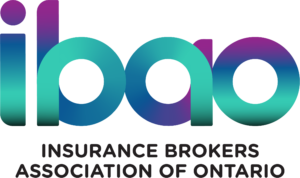By Ken Sedgewick, SHARP Mobile
We’re living in the age of digital relevance. There are apps for ordering just about anything, cars that drive themselves, Fitbits for a plethora of health insights, online/mobile banking and investing and other digital vehicles to ultimately produce faster, more efficient results. It’s now possible to buy insurance online, chat with a bot to better understand your insurance policy, obtain an auto quote with your driver’s license and submit claims anywhere, anytime. Digital proof of insurance is legal in 40+ states and will be accepted here in Canada in the near future.
Important questions about consumer behaviour have been raised: How are people communicating? How do consumers shop? How do people access information? Understanding and catering to your clients is crucial for new sales and client retention. It’s no longer enough to follow the trends set by your competitors: your ideal place is on equal footing or ahead of the curve.
WHAT DO CONSUMERS WANT?
Statistics show that over 40% of consumers use their smart phones for web searches. Imagine a potential client Googling your brokerage because it was recommended to them; they become quickly annoyed that a) your webpage isn’t optimized for mobile, and b) the content is such that it doesn’t allow them to know your services in under a minute. If there’s technical terminology and over-extended paragraphs, you may have a trifecta of factors that drive consumers away. The digital consumer is spoiled: they’re used to immediate gratification be it through online purchasing or mobile support through applications. Case in point – Amazon. More than 50% of online consumers search for products on Amazon before searching anywhere else – you search, you order, you receive it in two days. Not providing convenient options to contact your brokerage could risk losing business.
In addition to options, the digital consumer wants accessibility – they expect access to information 24/7. Think of the success and infiltration of online and mobile banking. Consumers experienced the simplicity of accessing things when it was convenient for them: they like having access to account balances without calling or visiting a teller or bank machine; they like making changes at any time of day; they like depositing cheques with their phone. This is also a trend for insurance: knowing what your deductible is or when your next payment’s due isn’t an emergency, but it’s the new norm consumers expect from service providers. Few consumers who are used to this accessibility will be happy with anything else.
IT’S NOT TOO LATE, NOR TOO EXPENSIVE TO MAKE THE DIGITAL LEAP
You may be thinking it’s too late to change your digital strategy, or it’s going to take too much time and money. Not true! You don’t have to change overnight – take baby steps. Build a plan and chip away at what’s most important for your brokerage.
WHY UNDERSTANDING THE DIGITAL PARADIGM IS CRUCIAL
There are a lot of sites, blogs, books and articles dedicated to the topic of digital marketing, mobile business practices and adapting to new technology. There aren’t many that focus on the insurance industry in Canada and the unique issues we face as brokers. The Government of Canada is working to approve the use of digital pink cards as acceptable proof of insurance. There will no longer be a need for consumers to keep an up-to-date paper-based pink card in their glove compartment when their mobile phone can securely store the information. According to Sharp Mobile’s data, digital pink cards are the most accessed feature by clients on mobile apps, and 30% of users access information between 5pm and midnight. With the approval of digital pink cards and modern consumer behaviour, how will your brokerage be prepared to service these clients? There’s never been a more important time to review, analyse and plan your brokerage’s digital strategy.




